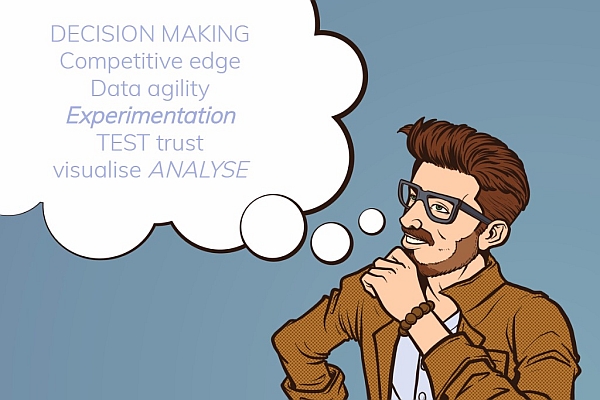Published on the 08/11/2017 | Written by Wayne Goodall, Senior Director of Cloud Applications Development at Oracle

How leading CFOs can gain a significant competitive edge by utilising data from multiple sources to predict market trends ahead of competitors…
We live in an age of information and disruption; an age where the data we produce is growing at an exponential rate, and long-established industries are being reimagined and reconfigured all the time. For CFOs, it’s more important than ever to keep your ‘finger on the pulse’ by examining trends in your business and the marketplace to make informed decisions, driving your competitive edge. To me, the ‘data-driven advantage’ is about securing insights to manage that disruption – connecting the dots in data produced from myriad sources and applying it to a workable decision-making process. Once this is in place, CFOs – and the C-Suite in general – can take advantage by leveraging the information to improve business performance. In a previous post, I talked about how critical it is for CFOs to become omnipresent, providing insights across all lines of the business including operations, marketing, and human resources. The alternative could be a poorly-informed decision-making process. It’s the CFO’s role to bring those business units together, get that data moving and to show how business units interact and impact on the end result. This information is only valuable if you’re working in an integrated and connected manner – utilising internal data across operations, sales and human capital, as well as external data sources such as weather and social media sentiments. These are all key factors when adapting to changes in the market place. So how is data introduced to decision making? The key is to experiment with data to look for trends that we may otherwise miss. There is no ‘right’ way to analyse this information, but modern tools make it easier for finance to experiment with a range of scenarios and business models and, as machine learning technologies are incorporated, test new algorithms to assess risks before they’re are put into production. A simple test you could run: If we increase the price of something by five percent and the demand goes down by ten percent, what is the effect on our bottom line? Generally speaking, you’re identifying trends and looking for exceptions. When you identify a trend, you can start working on ways to exploit it. When you spot an exception, you can look for ways to account for its presence and figure out ways to remove it. It’s about promoting a ‘test’ mentality in yourself, and then using machine power combined with human thinking to create something understandable and valuable from that mentality. The best way to make it understandable of course is to make it visual. Don’t produce a 40-page document of text and expect people to engage with it. Create a clear narrative that others can understand and remember. Luckily, there are lots of different data visualisation tools to help you do this. The first step is trust. You need to ensure your data is trustworthy and then you need to trust the data. This is a leap of faith for some people, but the data is there and it’s growing exponentially. The rewards are potentially massive, but more importantly, there are real risks of standing still and getting passed by competitors. Not understanding the data that influences your business increases the risk that your organisation is consumed by market forces. It’s actually a very simple idea. You’re looking to create smarter, more efficient, more cost-effective organisations. That is the role of the CFO. When you can do that, it can take you and your organisation on a journey to becoming – and staying – the market leader. This is the second article in a series looking at the modern CFO. Wayne Goodall is Oracle’s Senior Director of Cloud Applications Development in JAPAC, covering ERP & EPM products. In this role, he helps implement and empower large business transformations across the region.
The next in the series looks at the value of cloud in delivering business value.
The first article provides an overview of the challenges facing the modern CFO.



























 ABOUT WAYNE GOODALL//
ABOUT WAYNE GOODALL//
